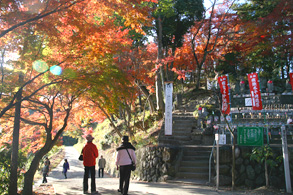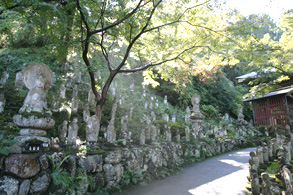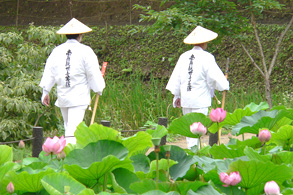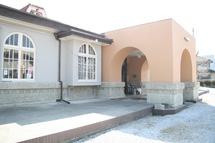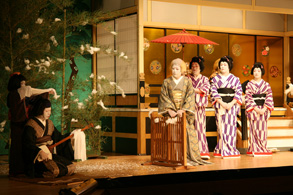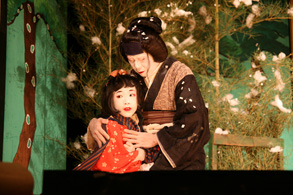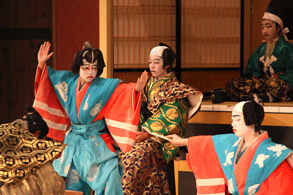Three Shrines of Chichibu
Chichibu Shrine
-
Chichibu Shrine enshrines several gods from the Chichibu region and is located in Hahaso no Mori forest in central Chichibu city.
The main sanctuary, the hall of offerings, and the hall of worship were rebuilt by Ieyasu Tokugawa and house famous sculptures such as the Kodakara Kosodate no Tora (Child Treasure Child-rearing Tiger), and Tsunagi no Ryu (Bridging Dragon), by famous sculptor Jingoro Hidari.
The shrine's regular festivals include the Chichibu Kawase Festival as well as the renowned Chichibu Night Festival.
Chichibu Shrine Web siteAddress 1-13 Banba-machi, Chichibu-shi, Saitama Phone 0494-22-0262 Seibu Railway 10 min. walk from Seibu Chichibu Station Chichibu Railway 3 min. walk from Chichibu Station -
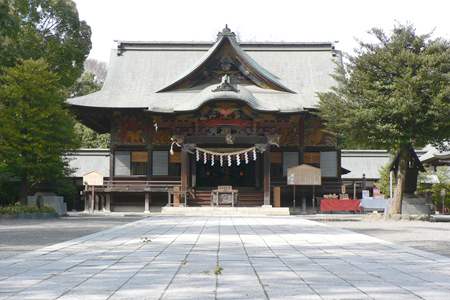
Mitsumine Shrine
-
Located at an altitude of 1,110 m on Mt. Mitsumine, this is a miracle-working shrine and a sacred place for mountain worship that has attracted followers since olden times.
Not only the large main sanctuary, but also the hall of worship and the remote rear shrine will hold you in awe.
The shrine's komainu (guardian dog statues) are enshrined as wolves, called Oinu-sama (honorable dogs), rather than foxes, reminding us of the strong feelings of the people who eked a living from the mountains in those times.
Address 298-1 Mitsumine, Chichibu-shi Phone 0494-55-0241 Seibu Kanko Basu Kyuko (Seibu Tourist Bus Express): 75 min. from Seibu Chichibu Station on the Seibu Chichibu Line, or get off at Seibu Chichibu Station on the Seibu Chichibu Line, walk to Ohanabatake Station and take the Chichibu Railway to Mitsumineguchi Station (50 min.).
Mitsumine Shrine Web site -
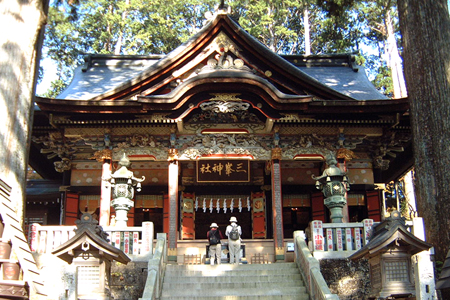
Hodosan Shrine
-
Hodosan Shrine stands at the foot of Mt. Hodosan and is said to date back about 2000 years. About 1 million worshipers visit the shrine each year to receive protection against fire disasters, theft, and various other difficulties. It celebrates events throughout the year, with the Shinnen Kaiun Kigan festival in January, Setsubun festival in February, Reitaisai festival in April, and Funatama festival in August, among others. Hodosan Shrine received a one star rating in the Michelin Green Guide Japan 2nd Edition that is an internationally recognized travel guide.
Hodosan Shrine Web site -
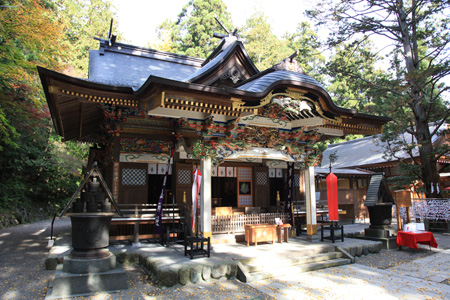
Chichibu Pilgrimage Circuit
Chichibu Pilgrimage Temples ( 34 Temples dotting Chichibu Valley )
The temples of the Chichibu Pilgrimage are included in the 100 Japanese Kannon Temples along with the 33 temples of the Saigoku Pilgrimage and the 33 temples of the Bando Pilgrimage. These sacred Kannon sites are dotted across three towns and one city: Chichibu city; and Yokoze, Minano, and Ogano in Chichibu county. One circuit of the pilgrimage from the 1st temple, Shimanbeji, to the 34th temple, Suisenji, is about 100 km.
Historical Quarter
Streetscapes of old that flourished with the silk fabric trade remain as they were
The built-up area of Chichibu city has been called Omiyago or Omiyamachi since olden times, and being a city bound by mountains, it has developed as a city combining the functions of a temple town, a market town, and a post town. It was the site of an encampment in the days of the Oshi fiefdom. Omiyago's streetscapes developed as the silk trade flourished, with Chichibu's fabrics, most notably Chichibu Meisen, gaining popularity throughout Japan from the mid Meiji era to the early Showa era. The buildings constructed in that period can be seen even now as they were in olden times, surviving as cafes, restaurants, shops and museums.
Old Arai Trading Store and Main House
Warehouse-style building and wholesale Meisen store of the Taisho era.
The two-storey gabled store was built on the east, while the former office is in the single-storey building on the southern gable side. It has received national Registered Tangible Cultural Property designation.
Chichibu Meisen Branch Stores (Kuromon-dori)
There are three Chichibu Meisen Branch Stores on Kuromon-dori. All are two-storey, spacious wooden buildings.
They are currently used as a cafe and a buckwheat noodle shop.
They have received national Registered Tangible Cultural Property designation.
Ogano Kabuki
What is Ogano Kabuki?
Kabuki was at its peak in the Meiji and Taisho eras. It has been passed on since then thanks to the work of the Ogano Kabuki Preservation Society, formed to preserve it as cultural heritage. A feature of Ogano Kabuki is that all the costumes, props, and choreography are created by the people of Ogano. Ogano Kabuki is regularly performed eight times a year, on Ogano's permanent stage and on festival floats.
Ogano Kabuki has received prefectural Registered Intangible Cultural Property and Registered Intangible Folk Cultural Asset designations. Kabuki is flourishing in Ogano, so much so that it is said that the people of Ogano are all counted as Kabuki actors.

